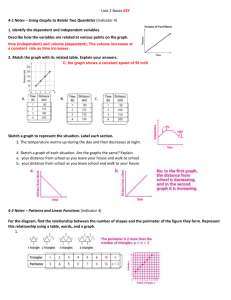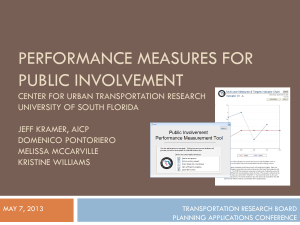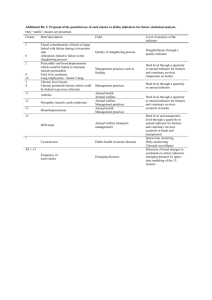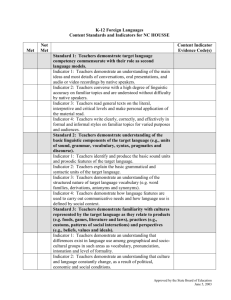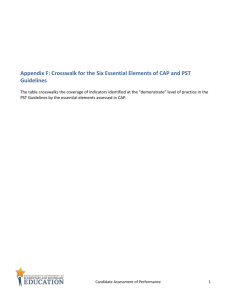Chp20
advertisement
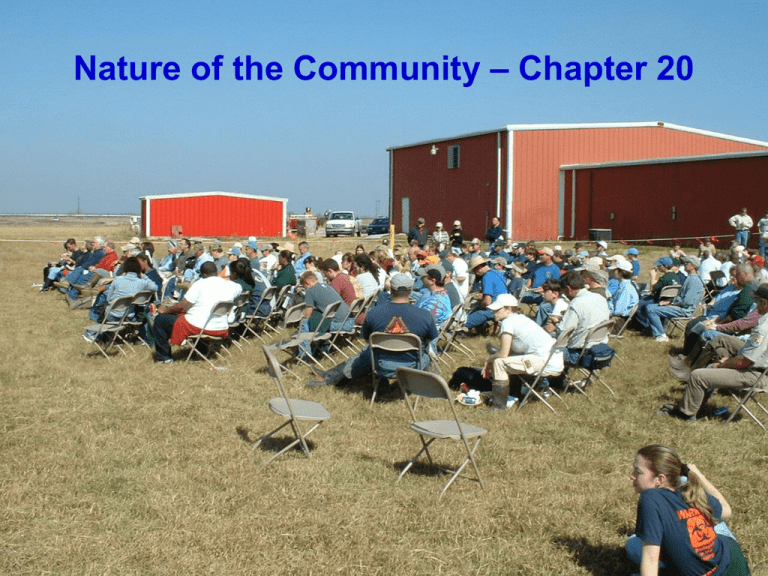
Nature of the Community – Chapter 20 Community • Any assemblage of populations of living organisms in a prescribed area or habitat – Can be of any size: user defined – Community of animals on a rotting log – Community of plants in the beech-maple deciduous forest Rivet Model of Communities • Species in a community are like rivets in the wings of airplanes • You can remove a few rivets, but how many are too many? • Obligate association vs. obligate exclusion – ‘tight’ communities Redundancy Model of Communities • Most species have little to do with each other – ‘loose’ communities • If one predator disappears, another takes its place Community Characteristics • Biodiversity – what species of animals and plants live there? – What controls biodiversity • Growth form and structure – major vegetation categories – Trees, shrubs, herbs, mosses – Broadleaf vs. needles – Stratification (vertical layering) of the community • Relative Abundance – are species equally abundant – Eveness • Trophic Structure – Who eats whom? – Determines flow of energy and materials – Determines biological organization Community Characteristics • Temporal – can be studied in a changing community or one that is in equilibrium – A stable community is referred to as a climax community – A changing community is considered to be going through succession • Spatial – studied across environmental gradients – How does the community change along a moisture or temperature gradient Community Boundaries • If communities are functional units, then there should be sharp boundaries between communities • However, most plant communities have a complex continuum of populations • Gradient analysis can be used to study the continuous variation of vegetation in relation to environmental variables Fundamental Unit Individualistic Continuum Resource-partitioned continuum Resource-partitioned continuum with several strata Distributional Relations • If the separate stands that make up a community are similar, then all or many of the species in the community must have similar geographic distributions Tension Zones • Areas between floristic provinces – Coincide with the distributional limits of many species Index of Similarity • If two communities are similar, then they should have many of the same species X = number of species in community 1 Y = number of species in community 2 Z = number of species occurring in both 2z Index of similarity = X + Y (2)(17) 26+27 = 0.64 Similarity of Crustacean Zooplankton of the Great Lakes Index of Similarity Lakes Superior and Michigan 0.81 Lakes Michigan and Huron 0.93 Lakes Erie and Ontario 0.90 Indicator Species • Can be used to define a community without having to catalog every species present • They can be a ‘signpost’ for the community or they can be a ‘health’ indicator • Fish indicator species can be used to estimate water quality – If fish are present that can not tolerate poor water quality, the water quality must be good – Presence of fish that can withstand poor water quality does not mean that he water quality is poor Criteria for Indicator Species • Should be well known and easily identifiable • The biology and natural history of the organism must be well known so that we have a good understanding of its tolerances and requirements – Should normally be a permanent resident of that community • Should be easily surveyed so non-professionals can be involved in surveys • Should be specialized to one community or habitat, or to the set of conditions it is supposed to indicate – Specialists are better than generalists • Should be closely associated with a group of other species it is supposed to indicate Types of Indicator Species • Umbrella species – indicator species with large area requirements (grizzly bear) – Take care of land requirements for this species, many other smaller ones will benefit • Flagship species – charismatic species that serve as conservation symbols and rallying points for the protection of areas (Bengal tiger) • Keystone species – pivotal species in a community that maintain the structure of the community (starfish; chp 23) Tiger beetles as indicator species for disturbance






